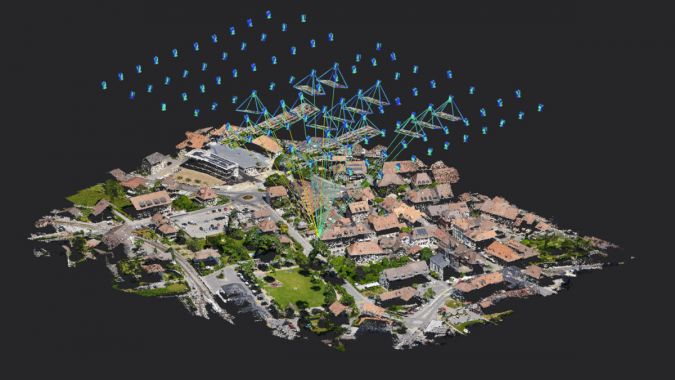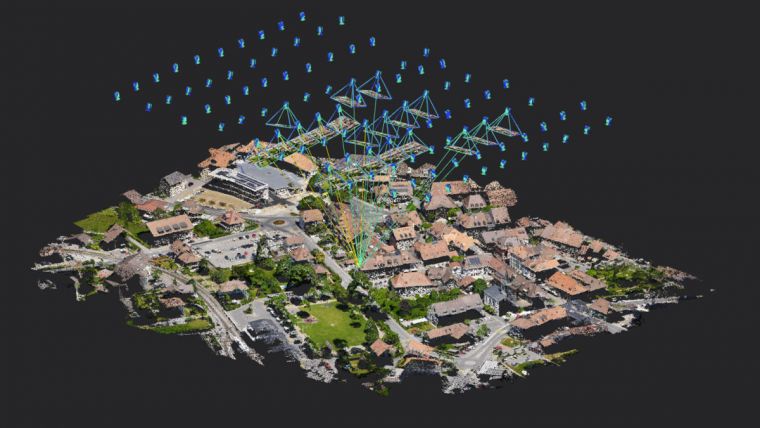Pix4D unveils new open standard for photogrammetric data
Pix4D has introduced OPF, a new standard for exchanging photogrammetry projects. OPF is a fully open and free specification, enabling the storage and exchange of photogrammetric data among different parties and software products, even if they are developed by different companies.
At its core, OPF is a flexible and extensible format that stores all the data related to a reconstructed 3D model created through photogrammetry. This includes information on both the inputs and outputs of the photogrammetry process.
The input data encompasses details about the cameras used, their parameters, coordinate reference system, control points, scale and more. On the other hand, the output data comprises information about camera calibration and the dense reconstructed point cloud.
Standardized open format for photogrammetric data
Pix4D developed OPF to address the need for a standardized and open format for storing and sharing photogrammetric data. Currently, there is no widely accepted format for sharing this information, which can hinder collaboration between organizations or different software tools.
OPF is intended to be an open, non-proprietary format that anyone in the photogrammetry community can use. This standardized format will facilitate sharing and collaboration in projects, leading to increased efficiency and improved outcomes in photogrammetry.
With OPF, data from photogrammetry projects will be more accessible to individuals and compatible with multiple software tools. This allows for the utilization of the data in algorithms, research and other endeavours, thereby enhancing data transparency and enabling experimentation.
Primarily designed for use in the fields of photogrammetry and remote sensing, OPF caters to researchers, academics and professionals who work with digital images and require a standardized and efficient method for managing and sharing photogrammetry projects.
Connecting photogrammetrists worldwide
One key benefit of OPF is its facilitation of better sharing options for photogrammetry data, which is particularly useful for research efforts. The non-proprietary structure ensures researchers can easily access and work with the same data without compatibility concerns. This fosters collaboration among teams and facilities, connecting photogrammetrists worldwide, and saving time that was previously spent on data conversion.
Furthermore, OPF can encourage open science practices by promoting data sharing and reuse. Researchers can deposit their photogrammetric data in OPF-compliant repositories, making it available for others to use and build upon. This contributes to greater scientific transparency, reproducibility and collaboration within the academic community.
OPF has a wide range of applications. In an academic context, it can be used to showcase the intricate structure of modern photogrammetric projects and enable adjustments to various generated assets. For researchers, it provides a platform to develop new technology based on photogrammetry outputs or to create new photogrammetry algorithms that can be easily used by others. Third-party users can also develop their own techniques to tailor OPF and incorporate new shareability functions.
For more information on how OPF works and the available resources, including examples of its capabilities, please see here.


Value staying current with geomatics?
Stay on the map with our expertly curated newsletters.
We provide educational insights, industry updates, and inspiring stories to help you learn, grow, and reach your full potential in your field. Don't miss out - subscribe today and ensure you're always informed, educated, and inspired.
Choose your newsletter(s)












